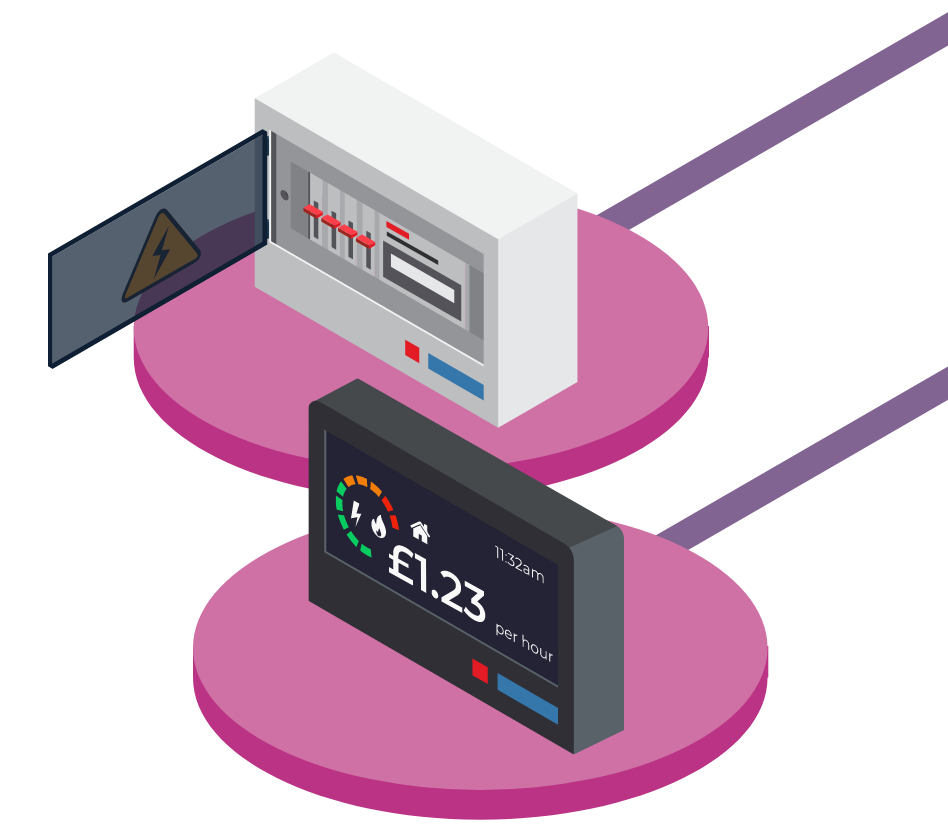Getting your electricity meter installed
Everything you need to prepare for a quick and easy installation
If you are a business, contractor or developer preparing for a new current transformer (CT) operated electricity meter installation or connection, keep reading for guidance on how to prepare for a quick and hassle-free experience.

Why preparation matters
To avoid delays, extra costs, or the need to rebook, it's essential that your site is fully prepared before our visit. The right infrastructure must be in place to allow a safe and efficient meter installation.
Before we attend your site
If your site isn’t ready, your appointment will need to be rescheduled, which may delay your wider project. Please make sure everything is in place ahead of time – take a look at our checklist below.
If you are yet to request a meter installation for your business premises, please contact our New Connections Team.

Your metering checklist
Everything that needs to be ready before your meter installation visitPlease ensure that your Network Operator has:
- Installed your service cable, supply cutout/supply switchgear
-
Installed your remote metering panel with a pilot cable using industry recognised metering equipment in line with Elexon Balancing and Settlement Code (BSC) metering codes of practice, and that the secondary cable identification clearly shows the current and voltage references.
- Provided CT technical details including ratio, class, and burden volt-amperes (VA)
- Confirmed your supply energisation status
- Confirmed the earthing arrangement within the remote panel
For HV metering:
- Provided CT and voltage transformer (VT) technical details
- Provided a single line diagram
Please ensure that your electrician/Network Operator has:
- Installed your main load isolator/switchgear and load cables in accordance with the BS 7671 wiring regulations and capacity requirements for your site
Please ensure that your Network Operator has:
- Installed your service cable, supply cutout/supply switchgear
-
Installed your combined/separate metering panel and CT chamber using nationally recognised metering equipment, and the secondary cable identification clearly shows the current and voltage references.
- Provided CT technical details including ratio, class, and burden volt-amperes (VA)
- Confirmed your supply energisation status
- Confirmed the earthing arrangement
Please ensure that your electrician/Network Operator has:
- Installed your main load isolator/switchgear and load cables in accordance with the BS 7671 wiring regulations and capacity requirements for your site
Please ensure that your Network Operator has:
- Installed your service cable, supply cutout/supply switchgear
- Installed your combined/separate metering panel and CT chamber using nationally recognised metering equipment, and the secondary cable identification clearly shows the current and voltage references.
- Provided CT technical details including ratio, class, and burden volt-amperes (VA)
- Confirmed your supply energisation status
- Confirmed the earthing arrangement
Please ensure that your electrician/Network Operator has:
- Installed your main load isolator/switchgear and load cables in accordance with the BS 7671 wiring regulations and capacity requirements for your site
- Protected by Residual Current Device (RCD) 30ma/100ma or Residual Current Breaker with Overload protection (RCBO) covering the whole installation with an earth stake
Example meter installation diagrams
To help you better understand the setup requirements, we've included downloadable diagrams showing typical CT metering configurations. These visuals are designed to support the checklists above by illustrating how equipment should be arranged on-site.
Why use these diagrams?
- See how a compliant installation should look
- Double-check your site setup against industry expectations
- Share with your electrician or site contractor for clarity
Technical guidance for Building Network Operators
If your electrician is unfamiliar with CTO metering, you should seek guidance from an approved CTO metering service contractor.
-
Current Transformers must be class 0.5s and appropriately sized with the correct burden for the metering installation.
For guidance, refer to the Elexon Metering Codes of Practice: BSC -
Secondary cable size should be a minimum of 2.5mm², single insulated.
-
Secondary cable identification must clearly indicate the current and voltage references.
-
Use only industry-recognised CTO metering equipment.
Get in touch
If you have any questions about your meter connection or need help preparing your site, our team is here to support you.
Get in touch/npm214%20Digital_H_UB139.jpg)
